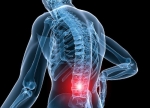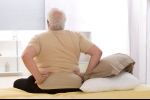Home »
Blog » Back Pain
| Stem Cell, PRP, Acupuncture in Queens & Long Island, New York
Back Pain | Stem Cell, PRP, Acupuncture in Queens & Long Island, New York
Tags: Back Pain | Posted on: 26-Oct-2020 | No of views: 6031 For the last several months, the home has become a place where many of us work and interact with the world. The use of live video chatting technologies to meet with co-workers or connect with friends and family has become part of the new normal for millions. But the use of all this technology at home can lead to unwanted pain problems or exacerbate existing issues. The human frame was meant to move freely, not looking down and keyboarding while slouching all day long. A number of my patients who have been forced to work remotely have found it challenging to create a comfortable (ergonomic) “workstation” at home and this has led to a whole host of pain problems, including carpal tunnel syndrome, elbow and shoulder pain, headaches, neck stiffness, and back pain.
Read more
Tags: Back Pain | Posted on: 24-Oct-2020 | No of views: 6551 Our spines are remarkable they're made up of incredibly intricate systems of bones, ligaments, tendons, and muscles that work together to enable movement in all directions. While all of this movement is great, the potential downside is that it can contribute to injuries and wear-and-tear damage over time that may lead to back pain and stiffness. Understanding how movement impacts your spine can help you better communicate with your physician and hopefully get an accurate diagnosis for faster treatment and pain relief.
Read more
Tags: Back Pain | Posted on: 19-Oct-2020 | No of views: 7656 There are times when an overly optimistic attitude or misguided belief about what’s possible can actually get in the way of healing. One example of this is the notion that there is a cure or fix for everything that hurts. Quite understandably, many patients go to their doctors with the goal of getting fixed. They want to find out what the problem is, get it fixed, make the pain go away, and then move on with their lives.
Read more
Tags: Back Pain | Posted on: 12-Oct-2020 | No of views: 8165 Pain that starts in one place doesn’t necessarily stay there. Over time, pain can spread, shift, expand, or radiate, from one part of the body to another, making treatment even more challenging. One common way that pain spreads to other parts of the body is through over-compensation, where we start to change our movement patterns to compensate for a part of the body that is injured or hurting. One typical example is a backache caused by chronic pain in a knee or foot.
Read more
Tags: Back Pain | Posted on: 09-Oct-2020 | No of views: 6613 Walking is relatively easy to do and one of the most overlooked ways that you can help relieve and prevent future flareups of lower back pain. Two specific and direct benefits of adding a regular walking routine to your lower back treatment program are highlighted below.
Walking Strengthens the Muscles That Support Your Spine - Your trunk, core, and lumbar (lower back) muscles play a vital role in maintaining the stability and movement of your lower back.
Read more
Tags: Back Pain | Posted on: 05-Oct-2020 | No of views: 6079 When patients and their doctors talk about pain relief strategies, one area often gets overlooked: weight management. While working on a weight management plan likely won’t offer instant relief, research seems to indicate there is a strong connection between carrying extra pounds and how much we hurt and even modest weight loss can help turn things around.
Read more
Tags: Back Pain | Posted on: 02-Oct-2020 | No of views: 12454 A muscle strain is a common cause of lower back pain and maybe localized to the right side of your lower back. Muscle strains occur when a muscle is pulled beyond its normal limit, causing the muscle fibers to overstretch or have small, microscopic tears. While this type of injury is typically minor and heals without complications1, the pain may be severe and your back may be markedly stiff.
Read more
Tags: Back Pain | Posted on: 28-Sep-2020 | No of views: 5777 Pain can be a huge barrier to living a happy and fulfilling life. When I meet a new patient for the first time, I often let them know that while working on the pain problem itself is very important, my primary goal is to break down this barrier and help them get to healthy and well overall.
Read more
Tags: Back Pain | Posted on: 25-Sep-2020 | No of views: 8689 Yoga is a low-impact, effective way to relax tight muscles and build strength which can help relieve lower back pain. Try these 3 beginner-level poses and see if you find relief. Remember to take it slow and stop if the pain gets worse.
Sphinx Pose - The sphinx pose puts your lower back muscles in a more relaxed position and is sometimes recommended for people who have sciatica pain from a herniated disc. You need to lie on the ground, so use a yoga mat or thick towel.
Read more
Tags: Back Pain | Posted on: 21-Sep-2020 | No of views: 6501 Neuropathic Pain - Treatment of neuropathic pain is a clinical challenge, as the pathogenesis is very complicated. The pathology of neuropathic pain involves the entire nervous systems, including the peripheral nerve, dorsal root ganglion, spinal cord, and brain. The main idea of applying stem cells to neuropathic pain is based on the ability of stem cells to release neurotrophic factors, along with providing a cellular source for replacing the injured neural cells, which make them ideal candidates for modulating and possibly reversing intractable neuropathic pain.
Read more
Love this Post? Spread the World






















